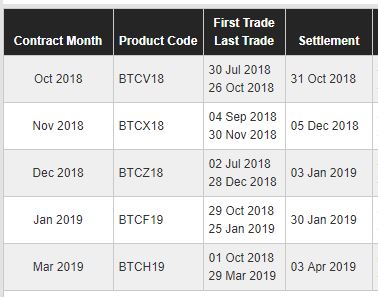2020-7-31 12:04 |
The crypto journey does not start when buying your first coins. It begins way before actually taking action, when someone or something plants the seed in your mind to hop onto the crypto train. A seed that then grows, sprouts and doesn’t let you go until you join the club. Whether you are in the early stages of your crypto journey or already convinced to join in but in need of information, the following aims to help you go through your crypto thinking process. Ready to scroll down?
#1 – Why even buy crypto?Your first question might be « why? » and the answer goes beyond mere investment. Of course, as a financial asset, cryptocurrency can be part of an investment strategy, bought, traded or held in an attempt to make money. The investment potential got a lot of public attention during the Bitcoin boom of 2017. Giving birth to people’s fantasy of effortless and fast massive wealth, while increasing the number of the Bitcoin Regret Club members. Indeed, Bitcoin is an exception as it has been the best performing asset over the last 10 years by a landslide.
Being interested in crypto means more than just money. It is about becoming part of a dynamic of change that carries a revolutionary future. Linked with blockchain, crypto is the fuel for an entire new system in which you, as a free individual, can make your own moves.
A blockchain is a distributed ledger, similar to a database. But rather than being controlled by a central authority the ledger is dispersed across multiple computers, which can be located all over the world and run by anyone with an Internet connection (Lost? Here is the extended version). In other words, blockchains are permissionless and decentralized networks that remove the need to trust individuals, fostering social scalability and allowing value transfers free from the control of external parties. Because the peer-to-peer network is established through collaboration and code, rather than a central authority, you no longer need a third-party to make a value transfer around the world, a ballot paper to vote or an escrow account to buy a home… It redefines the future of our entire existing systems such as banking, politics, education… and maybe so much more.
What about crypto in all this? Bitcoin actually piloted blockchain technology. With the creation of Bitcoin, blockchain was invented. The technology simply didn’t exist before it. Buying crypto means supporting both the project linked to said crypto as well as the entire ecosystem: its revolutionary potential and future.
#2 – Which one(s) should I finally go for?There is no good or bad choice in terms of crypto buying. The most important is to do your own research on which crypto you want to buy invest in and to educate your sell before any transaction.
It depends on how you want to use it. Basically, you have 3 different types of crypto:
Bitcoin (BTC), the first blockchain and successful cryptocurrency ever, introduced in Satoshi Nakamoto’s whitepaper “Bitcoin: A Peer-to-Peer Electronic Cash System” in October 2008. This day in Bitcoin history has carved the path for the entire crypto ecosystem we know today. Ever since, Bitcoin has been the largest part of the crypto market, still holding over 60% dominance over the rest.
Then, you have Altcoins, the new blockchains created after Bitcoin that usually refer to any coins that are not Bitcoins. The name “Altcoin” actually means “alternative to Bitcoin”. Today, there are more than a thousand Altcoins in existence, though a majority are alternate versions of Bitcoin with minor changes. Here we come to the next important point about Altcoins: they are not all the same – as a matter of fact, they can be radically different from one another. In the first (big) group, you have those based on the Bitcoin blockchain which actually are alternate versions of Bitcoin, like Litecoin. In the second group, you have Altcoins that do not use the same protocol as Bitcoin does, but use their own separate one instead. Those Altcoins are very different from Bitcoin both in terms of algorithm and/or purpose (for the more seasoned among you, this algorithm difference refers to “Proof of Work vs. Proof of Stake”. You can pass this topic for now though). The famous crypto Ethereum (ETH) is one of these highly different Altcoins compared to Bitcoin. While Bitcoin is used as a digital currency, Ethereum has been designed to be a network that others can build upon and create separate ecosystems – all on a single blockchain.
Both Bitcoin and Altcoins are referred to as coins (so far so good). For most of them, they have limited supply. For instance, there are only 21 million BTC that can be mined and used.
The third types of crypto are tokens, which differ from Altcoins in the fact that they do not have their own blockchain and only exist on other blockchains. There are several blockchains that permit the existence of tokens on its network. The best known one is Ethereum, but others exist such as NEO or Binance Chain (BNB).
As mentioned above, no bad choice but one universal rule instead: buy only the crypto you believe in once you have educated yourself. Especially if you are looking for the next nugget and therefore willing to buy into a yet unknown crypto. First, no matter your choice, you have to be informed before doing anything. Fake tokens exist. There are well planned scams with funding and marketing that are trying to steal money from unsuspecting investors. Almost every legitimate crypto has a purpose and supports a project. Learning about the token and reading the reference document called a white paper, which includes an outline of the problem the project is looking to solve and its solution as well as the token’s details (role, number etc.), are among the must-do before any investment.
#3 – Where to buy my new coins?The classic crypto buyer’s journey consists of 2 to 3 steps depending on the type of crypto you wish to buy. Indeed, the main cryptocurrencies can be purchased via so-called “fiat to crypto” exchanges. These allow you to buy coins with euros, pounds, dollars, etc. This can be done via bank transfer, credit card or PayPal for example. In short, the process follows these steps: fiat > exchange > crypto (simple!).
However, if you want to buy a young or less known crypto, you might not find it on one of these exchanges allowing you to directly convert your fiat into cryptocurrency. You may have to use an intermediate crypto, such as Ethereum (ETH). Once you’ve bought your ETH, you’ll need to go to a “crypto to crypto” exchange in order to convert your ETH into the desired token. The process is then this one: fiat > exchange 1 > ETH > exchange 2 > token.
The Ledger team recently added a new feature to its secure ecosystem which allows you to buy different crypto assets directly through the platform Ledger Live with our partner Coinify. When using the Buy feature, the crypto you bought is automatically sent by Coinify to the address created by your Ledger wallet. This makes sure your freshly bought crypto is kept secure and in your control from the moment you finished the purchase. But what’s the point of all this? And what is a wallet? Very good questions, just keep reading!
#4 – What on earth do hot and cold wallets mean?After buying your coins or tokens, it’s very important to securely store them. Especially because by leaving them on the exchange you’ve just used, some might be vulnerable and your crypto can be stolen. One of the most iconic demonstrations of this is the Mt. Gox exchange hack in 2014, which consisted of a massive $460 million worth of Bitcoin at the time! Besides, you are not in complete control of your own coins. You’re actually outsourcing security to a third party rather than ensuring your funds are secure on your own.
Putting aside the exchange , there are 2 ways to store your crypto: the hot – or online – wallets, and cold – or offline – wallets. Cold wallet, also called cold storage, refers to physical (usually small) objects encrypted with special security codes in which you can securely store your cryptocurrencies (or more precisely your private key), in a completely offline environment while keeping access at any time. On the contrary, hot wallets (or hot storage) are digital crypto storing wallets that can be available on the internet, your desktop or any place in between.
When it comes to comparing the two kinds of wallet, there is an ongoing debate. However, among all the possible criterias to judge and start the discussion, the only valid one should be security, way beyond price, looks or options. This is not only our view as a crypto security company, but also a position shared by the community. To keep it simple, hot wallets are often favored for being usually free, existing for all cryptocurrencies out there, being easy to use and having a “hold your hand through the entire process” kind of a thing. However, being connected to the internet can make them more vulnerable to scams, fraud, hackers and thieves. Besides, they don’t give you full control – it would be like you’re outsourcing the security of your crypto to a third party.
On the other hand, cold wallets are a secure option when it comes to cryptocurrency storage of an individual while allowing you to be in complete control of your crypto assets (for the more resilient, not all cold wallets are equal in terms of security). The main cons are the price, although it appears subjective once it’s too late. With 60$ as the entry price to acquire such a device, it’s barely one month of the cheapest car insurance or the average monthly cost for a gym membership. The second most common downside is that cold wallets are not as practical or easily accessible as the hot ones, since they are not directly connected to your internet or desktop. However, over the years cold wallets have improved a lot in terms of user experience in an attempt to ease the process of securing your crypto. For instance, the Ledger Nano X has added a bluetooth connection and we’ve improved app integration, including the recently created seamless buying experience in Ledger Live’s new update.
#5 – How to leverage my crypto?Last but not least, once you are an official crypto owner, how can you use it for investing? It has been analyzed that there are two main investment strategies (not saying crypto is a binary thing… but still the simplification appears to often go in pairs). Opting for one strategy rather than another depends on which crypto investor you want to be. In other words, it depends on your knowledge, financial capabilities, education to the crypto world, intentions behind investing in crypto and to what extend you’re willing to take risk (security alert #1: investing is always risky, no matter what the asset is, , educate yourself before taking any decision). To help you do so, you should go through several questions among which: what your investment goals are, how you will achieve them, how long you are prepared to keep your investment open and how much risk you are willing to take. The first question to ask yourself is if you are looking for long-term value with little time and effort, more as a side-activity. Or do you want to make your first steps in the trading world as an apprentice, and you’re really motivated to spend time on it. Knowing there is no exclusive strategy since diversifying one’s investment portfolio is said and viewed as a basic technique to reduce risk, following the famous advice to not put all your eggs in one basket.
Let’s say you want to try and get on board while minimizing the personal time and energy involved. You seem to be the more long-term cryptocurrency investment type.
A long-term investment is one where you expect a cryptocurrency to perform better over a longer period of time. This strategy is often referred to in the crypto world as “HODL” i.e. to hold your coins for a long time period while betting on the continuous and gradual growth. Choosing this strategy, it is really important to be well-informed, educating yourself, before investing and, ideally, to really believe in the cryptocurrency you invest in. The more belief you have, the less you’re likely to “panic sell” when the prices drop and potentially regret it. (security alert #2: all (crypto) investments involve volatility risks). A principle of belief conveyed by the word HODL. Making its first appearance in 2013 on a post on Bitcoin Talk, “HODL” comes from a member named GameKyuubi who mistakenly wrote « I AM HODLING » instead of holding, to convey its conviction to hold into Bitcoin despite the drop in price.
Now let’s say you are a wannabe trader ready to spend time on your crypto investment, it seems you’re more the short-term cryptocurrency investment type.
These are investments made over shorter time periods in the hope of making quick profits and can take seconds, minutes, days or even a few months. Although “large” crypto like Bitcoin or Ethereum can be traded in the short-term, you could be more interested in young and new cryptocurrencies with quick growth potential. In short, the idea with young crypto investments is to get on the train before it pops, betting on a crazy value increase while taking the risk to lose everything, or even to own a crypto that will not exist anymore (security alert #3: in any case only invest what you’re willing and can afford to lose). To maximize your chances, you have to pay attention to a lot of criteria before and during your investment in order to effectively bet on a good horse and sell it at the proper time. That’s why short-term investments (ironically) take up a lot of time and effort as you need to watch the market prices constantly.
So, ready to dive in?Whether you are at the very beginning of your crypto journey or already ready to buy your first coins, Ledger aims to support you all along. As a company, we firmly believe in crypto and its future. As much as we can, we’re dedicated to make it easier while always ensuring top-notch security that our technology can provide. Because simplicity and security are the two main pillars of a powerful and democratized crypto ecosystem in which you have the power.
The content you are reading is for informational purpose only. Nothing contained in this article constitutes a solicitation or recommendation to buy or sell crypto-assets in this or in any other jurisdiction in which such solicitation could be unlawful under the laws of the country.
Before using the services, please educate yourself to make informed decisions. Crypto assets are volatile. Carefully evaluate your goals and the financial risk you are willing to take. Please be aware that Ledger does not provide financial, tax, or legal advice. Decisions to perform operations involving crypto assets should be taken on your own or rely on opinions of reliable and qualified experts.
origin »Emerald Crypto (EMD) íà Currencies.ru
|
|



















